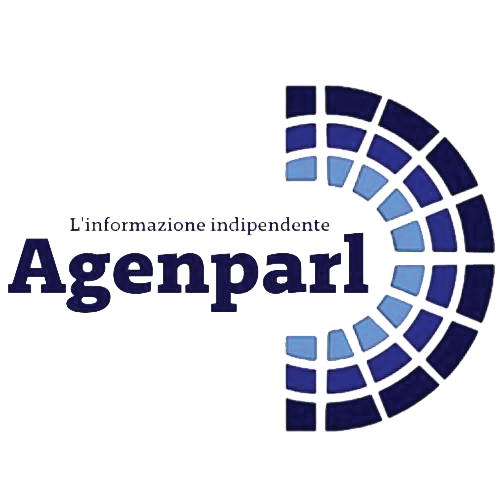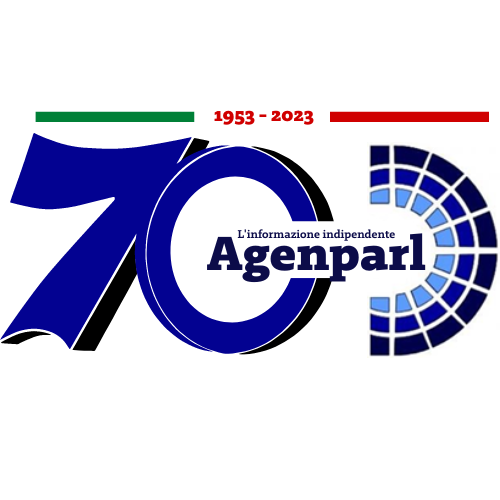 (AGENPARL) - Roma, 25 Novembre 2025
(AGENPARL) - Roma, 25 Novembre 2025(AGENPARL) – Tue 25 November 2025 Transmission losses become increasingly significant as communication systems move toward higher frequencies, making low-loss materials essential to preserve signal strength and integrity. This new release written by industry expert Dr Shababa Selim shares insights into the areas where low-loss materials can play an important role.
* For Immediate Release *
* Low-Loss Materials: Key Enablers for 5G/6G, Radar, and High-Speed Digital *
* Tuesday 25 November 2025 *
* IDTechEx *
* Cambridge, UK *
* Low-Loss Materials: Key Enablers for 5G/6G, Radar, and High-Speed Digital *
Transmission losses become increasingly significant as communication systems move toward higher frequencies, making low-loss materials essential to preserve signal strength and integrity. These materials are critical for technologies such as 5G mmWave and future 6G telecommunications which is expected to see deployment around 2030, as well as for automotive radar systems for advanced driver assistance systems (ADAS). Similarly, data center infrastructure is shifting toward ultra-high data rates exceeding 200Gbps amplifying the need for materials that can perform reliably and maintain signal integrity under such demanding conditions.
The growth of these markets presents a significant opportunity for low-loss materials, with IDTechEx’s forecasts in the new report “ ## Low-Loss Materials for 5G/6G, Radar, and High-Speed Digital 2026-2036: Markets, Trends, and Forecasts ## (https://www.idtechex.com/en/research-report/low-loss-materials/1135)” predicting a ~7-fold increase in material demand for 5G and automotive radar over the next decade, at a CAGR of 21.3%.
The range of loss tangent (Df) values of low-loss materials and the key material properties assessed in IDTechEx’s report Low-Loss Materials 2026-2036. Source: IDTechEx
* Low-Loss Materials for 5G and Beyond *
With the future rise of mmWave 5G and eventually 6G, low-loss materials will experience rapid growth and play an increasingly important role. Low-loss materials will not only be used as a substrate for RF components or for the PCB, but also within advanced packages. One strong packaging trend is antenna in package (AiP); as telecom technology goes higher in frequency towards mmWave 5G and beyond, the size of the antenna elements will shrink such that the arrays can be fitted into the package itself. This integration will also help shorten the RF paths and thus minimize the transmission losses.
AiP will need low-loss materials for the substrates, redistribution layers, electromagnetic interference (EMI) shielding, mold underfill (MUF) materials, and more. The report covers these trends and technologies in greater detail, along with providing 10-year material demand forecast by frequency (sub-6GHz and mmWave) and material type (e.g. epoxy and BT, PTFE, LTCC & ceramics, PI & MPI, etc.) for 5G smartphones, base stations, and customer premise equipment (CPE).
Additionally, work is well underway in preparation for 6G which IDTechEx expects to enter commercialization around 2030. Research institutions and materials suppliers are already exploring the material requirements needed to meet the next generation of telecommunication technologies. IDTechEx’s report “ ## Low-Loss Materials for 5G/6G, Radar, and High-Speed Digital 2026-2036: Markets, Trends, and Forecasts ## (https://www.idtechex.com/en/research-report/low-loss-materials/1135)” explores the approaches to achieve even lower Df/Dk for 6G and potential 6G applications, like reconfigurable intelligent surfaces (RIS).
* Low-Loss Materials for Automotive Radar *
As automotive autonomy advances, the number of sensors integrated into each vehicle continues to rise. Over the past decade, increasingly sophisticated ADAS capabilities have driven widespread adoption of radar technologies, with the current 76-81GHz band for long-rage radar, and ongoing development of 140GHz systems. Alongside this shift, industry trends such as greater system integration and continual cost pressures are placing increased emphasis on cost-efficient, low-loss materials capable of operating reliably at high frequencies.
To meet these needs, materials must not only exhibit low and stable dielectric constant (Dk) and loss tangent (Df) across operating frequencies and temperatures, but also deliver strong thermal and moisture stability, consistent physical and electrical performance, and high manufacturing processability, all while keeping costs competitive. Detailed assessments of trends, material requirements, and 10-year forecasts for material demand (by material type) for automotive radar are available within IDTechEx’s report “ ## Low-Loss Materials for 5G/6G, Radar, and High-Speed Digital 2026-2036: Markets, Trends, and Forecasts ## (https://www.idtechex.com/en/research-report/low-loss-materials/1135)”.
* Low-Loss Materials for High-Speed Digital *
The demand for signal integrity continues to rise as higher frequencies and faster data transfer speeds become essential to meet the growing data needs of our increasingly connected world. Datacenter infrastructure increasingly relies on low-loss materials to maintain signal integrity and reliability for high data transfer rates, where low-loss materials are used in substrates across high performance computing servers, storage area networks, transceivers, routers, power amplifiers, high speed data channels, and more.
Substrates for high-speed digital (HSD) are generally multilayered complex structures with high density of traces, thus selecting materials for HSD requires significant consideration of the mechanical and thermal properties as these need to undergo multiple thermal cycling during manufacturing. IDTechEx spoke to low-loss materials players such as Kyocera and Isola, who are increasingly focusing on these applications.
* Benchmarks for Low-Loss Materials Covered within the Report *
In “ ## Low-Loss Materials for 5G/6G, Radar, and High-Speed Digital 2026-2036: Markets, Trends, and Forecasts ## (https://www.idtechex.com/en/research-report/low-loss-materials/1135)”, IDTechEx surveys the landscape of low-loss materials and benchmark the performance of over 150 products by several key factors, i.e. dielectric constant (Dk), dissipation factor/loss tangent (Df), frequency dependence of dielectric properties, thermal conductivity, coefficient of thermal expansion (CTE), glass transition temperature, moisture absorption, and more. In addition, the report also considers material cost and processability.
Organic materials have gained significant popularity for high frequency applications, with significant efforts to find PTFE alternatives, which has also seen the adoption of materials like PPE, LCP, hydrocarbons, and other advanced thermosets. While inorganic materials may appear to be progressing more slowly, materials like glass, LTCC, and other ceramics offer strong long-term potential owing to their excellent electrical and thermal properties.
IDTechEx’s report offers an independent and comprehensive analysis of market trends, examining key technologies and application areas driving demand for low-loss materials. Drawing on primary research, the report delivers insights into industry developments, analyzes leading market players, and benchmarks products across critical material performance characteristics. The report also includes 10-year demand forecasts segmented by application and material type.
For more information on this report, including downloadable sample pages, please visit ## http://www.IDTechEx.com/LowLossMats ## (http://www.idtechex.com/LowLossMats), or for the full portfolio of research available from IDTechEx, see ## http://www.IDTechEx.com ## (http://www.idtechex.com/).
* Media Contact: * Charlotte Martin Subscriptions Marketing Manager
========================================
